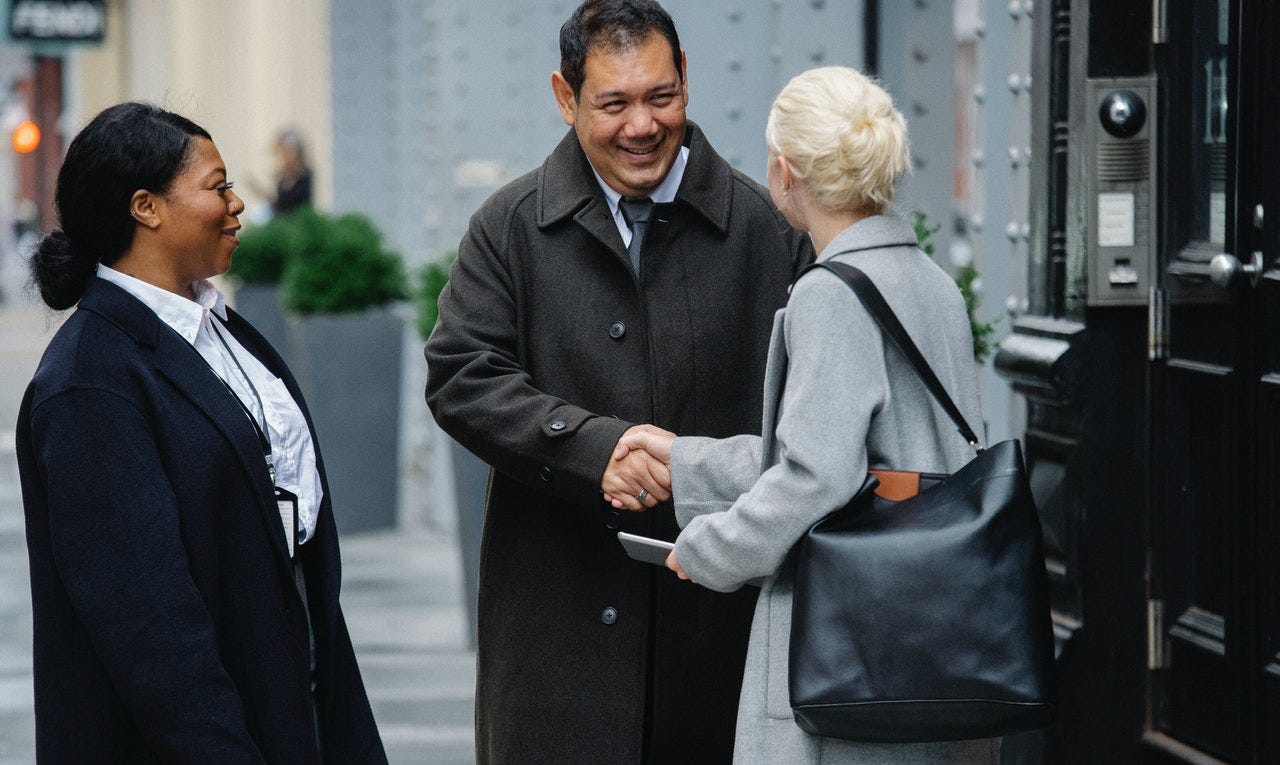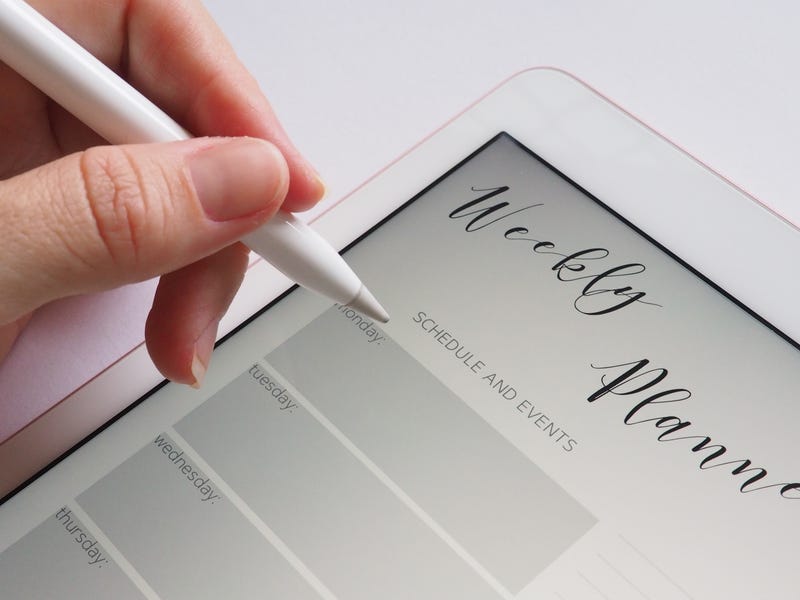
Authentic and interesting ways to say hi in German
Author:
Agnes Theresa
Are you wondering how to say hello in German, beyond the standard hello and hi? And did you know that the appropriate way of saying hi depends on the place, time of day, and who you are talking to?
In this article, we will teach you over 30 ways of saying hello in German. If this sounds like a lot, don’t worry. We’ll start with the most common ways of saying “hello” and move our way down to greetings that are only used in specific situations and contexts, so you’ll have the confidence to greet someone in German in any situation and setting.
Why is it important to know how to say hello in German?

The German language is spoken in Germany, Austria, and parts of Switzerland, making it the most common mother tongue in the European Union. While more than 50% of Germans understand English, knowing a bit of German will take you a long way. After all, Germany is the 4th largest economy in the world and an important trading partner for the USA.
Research has shown that it only takes a few seconds to make a first impression. The way we greet forms an important part of that. Even if your counterpart knows English, greeting them in German will show them that you have made the effort to get to know their language and culture.
So whether you’re planning a ski holiday in Switzerland, looking to relocate to Austria or preparing for a business meeting with a German investor, it is a good idea to learn German online or at the very least, know how to greet the locals in their first language.
Firstly, how do you actually say hello in German?
The most common way of saying “hello” in German is “Hallo”. This is a casual greeting. You should only use it when greeting friends and family:
Hello = Hallo
The word is pronounced as follows:
/haˈloː/
When practicing the proper pronunciation of this word, it may help to split it into two parts: “Ha” and “llo”.
If you don’t know how to read the phonetic transcription, you can find a full phonetics guide here.
Now, what do you say if you need to greet a business partner or stranger? And how do you greet someone using German slang? Read on for 31 other ways of saying hi in German!
31 other ways of saying hi in German:
Good day / Guten Tag:
| English | German greeting | IPA Pronunciation | Context |
| Good Day | Guten Tag | /ˌɡuːtn̩ ˈtaːk/ | Formal greeting |
Variations:
- Day = Tag /taːk/ (short version of “Good Day”, less formal than “Guten Tag”)
- Day = Tach /tax/ (short version of “Good Day”, less formal than “Guten Tag”)
Good morning / Guten Morgen:
| English | German greeting | IPA Pronunciation | Context |
| Good morning | Guten Morgen | /ˈɡuːtn̩ ˈmɔʁɡŋ̍/ | Used in casual and formal settings |
Variations:
- Morning = Morgen /ˈmɔrɡən/ (short version of “Good Morning”)
- Morning / Hi = Moin /mɔːɪn/ (very common in Hamburg, also used during the day)
- Morning / Hi = Moinsen /mɔːɪnsn/ (a playful variation of “Moin”, very common in Hamburg)
Good evening / Guten Abend:
| English | German greeting | IPA Pronunciation | Context |
| Good evening | Guten Abend | /ɡuːtn̩ˈaːbn̩t / | Used in casual and formal settings |
Variations:
- Evening= Abend / ˈaːbn̩t / (short version of “Good Evening”)
- An Evening= N’abend / nˈaːbn̩t/ (short version of “Good Evening”)
Greetings to… / Grüß…
| English | German greeting | IPA Pronunciation | Context |
| Greetings to God | Grüß Gott | /ɡʁyːs ˈɡɔt / | This greeting is very common in Austria and Southern Germany |
| Greetings to you | Grüß dich | / ɡʁyːs ˈdɪç / | Only to be used in casual settings |
| Greetings to you | Grüß Sie | /ɡʁyːs / | Only to be used in formal settings or when greeting a stranger, mostly used in Austria and Southern Germany |
Hi / Servus:
| English | German greeting | IPA Pronunciation | Context |
| Hi | Servus | /ˈsɛrvus/ | Casual greeting, only used in Austria and South Germany |
How’re you? / Wie geht’s ?
| English | German greeting | IPA Pronunciation | Context |
| How’re you | Wie geht’s? / Wie gehts? | /viˈɡeːts/ | Casual greeting |
| How are you? | Wie geht es dir? | /viˈɡeːt ɛs diːɐ̯/ | Only in casual settings |
| How are you? | Wie geht es Ihnen? | /viˈɡeːt ɛs ˈʔiːnən/ | Formal greeting |
Variations:
- Hi, how are you? = Hallo, wie gehts? / Hallo, wie geht’s? (informal greeting)
- Good day, how are you? = Guten Tag, wie geht es Ihnen? (formal greeting)
- Hi, how’re you? = Grüß dich, wie gehts? / Grüß dich, wie geht’s? (casual greeting)
How’s it going? / Wie läuft’s?
| English | German greeting | IPA Pronunciation | Context |
| How’s it going? | Wie läuft‘s? | Casual greeting |
Well… / Na?
| English | German greeting | IPA Pronunciation | Context |
| Well / Hi / How’s it going? How are you doing? | Na | /na(ː)/ | Casual greeting |
Variations:
- Well, how’s it going? = Na, wie läuft’s?(casual greeting, common in Germany)
- Well, how’re you? = Na, wie geht’s?(casual greeting, common in Germany)
- Well, what’s up? = Na, was gibt’s?(casual greeting, common in Germany)
- Well, you? = Na, du? (very affectionate casual greeting)
Was geht? / What’s up?
| English | German greeting | IPA Pronunciation | Context |
| What’s up? / What’s happening? | Was geht? | /vas ɡeːt / | Slang, mostly used among young people |
Variations:
- Hey, what’s happening? / Hey, what’s up? = Hey, was geht? (slang)
- Hey, what’s happening? / Hey, what’s up? = Hey, was geht ab?” (slang)
- Hey, what’s happening? / Hey, what’s up? = Yo, was geht ab? (slang)
Long time no see / Lange nicht gesehen:
| English | German greeting | IPA Pronunciation | Context |
| Long time no see! | Lange nicht gesehen! | /ˈlaŋə nɪçt ɡəˈzeːən / | Can be used in casual and formal settings |
FAQs for German greetings

1. What’s the difference between greeting a friend versus a colleague or professional acquaintance in German?
In general, it is best to stick with a formal greeting like “Guten Tag” when talking to a professional acquaintance, whereas with friends you can use informal greetings like “Na?” or “Hallo!”. Another very important thing to keep in mind is the difference between the casual “du” and the formal “Sie”. This distinction makes or breaks the difference between the casual “Grüß dich!” and the formal “Grüß Sie!”.
It is, however, quite common for German workplaces to revert to a more casual way of speaking once you have built a relationship. A good way of figuring out which greeting to use is to pay attention to the way a particular person greets you and respond in kind.
2. What are some German greeting faux pas?
A common faux pas is mixing up the formal “Sie” with the casual “du”. “Sie” is used with strangers, especially if they are older. It is also commonly used in educational settings and business settings. Mixing up “Sie” and “du” can easily lead to mistakes, because it affects the grammatical structure of the sentence you are trying to say.
When in doubt it is usually best to start off with using the formal “Sie”. If your counterpart is okay with being addressed with the casual “du”, they will let you know. For more detailed info on the ins and outs of “du” and “Sie”, click here.
3. How do you greet someone in writing?
You can start a letter with “Lieber…” (if you are addressing a man) or “Liebe…” (if you are addressing a woman). This is the equivalent of the English “Dear…”. When writing to somebody in a more formal setting, you can use “Sehr geehrte…” (if you are addressing a woman) or “Sehr geehrter…” (if you are addressing a man).
If you don’t know who you are writing to, you can’t go wrong with “Sehr geehrte Damen und Herren…”. This formal phrase roughly translates as “Most honored ladies and gentlemen…”. While this may sound very old-school, it is still a common way of writing in the German-speaking world.
However, it does depend on who you are writing to: If you are writing to a young start-up in Berlin, you will most likely be okay starting your letter with “Guten Tag!”.
Some final German greetings

You know quite a few ways to greet someone in German now and hopefully with confidence, well done! We’ll leave you with some final German greetings to add to your German vocabulary.
These include:
- the playful “Hallihallo”;
- the cute “Hallöchen”;
- the casual “Alles klar?” (“All clear?”);
- and the more formal “Guten Tag allerseits!” (“Good day, everyone!”).
There are also plenty of regional variations. For example, in the German part of Switzerland people commonly greet each other with “Grüezi” (“Greetings to you!”) or “Grüezi miteinand” (“Greetings, everybody!”).
While all these different greetings might seem like a lot at first, it won’t take you long to get an intuitive feel for which greeting to use in which situation. And don’t worry, it’s the effort that counts! When in doubt, a Guten Tag and a big smile goes a long way.


